Editor’s Note: This post is written by a member of LTV’s sponsored content team, The Leisure Explorers. Do you own a Leisure Travel Van and enjoy writing? Learn more about joining the team.
Take The Tour, Stay The Night At This Short Stop
The fact that the rural Carroll County, Iowa, town of Templeton is home to a distillery producing rye whiskey sold around the world is pretty odd. I mean, only 230 or so people live here. But, a deeper dive will tell you that this county and the town that lent Templeton Rye whiskey its name has always gone “against the grain,” so to speak. You’ll learn about all that and how this county’s reputation for making “The Good Stuff,” as it was called during Prohibition, came about on a 90-minute “shortstop” tour after leaving Interstate 80 west of Des Moines and driving a few minutes north.
If you’re a Harvest Hosts member, the distillery also makes a convenient overnight stop in your Leisure Travel Van. The history of this whiskey that has re-gained a huge modern following begins in the 1920s. When Prohibition was law from 1919 to 1933, farms here were whacked. Grain prices had tanked. Then, the Depression piled on, making things even worse. Then, making things worse, the Dust Bowl hit
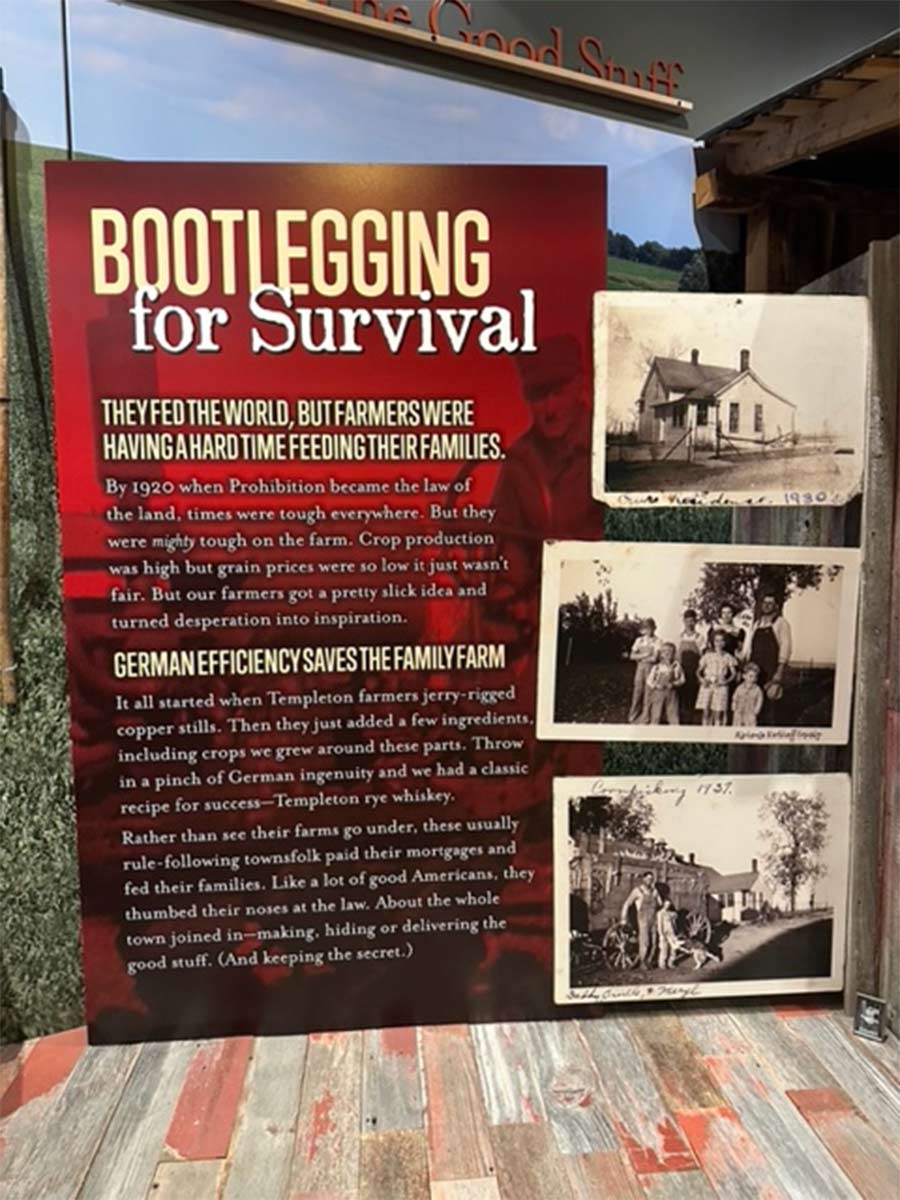
Carroll County Iowa farms had to survive somehow the triple whammy of Prohibition, the Depression, and the effects of The Dust Bowl. That’s when most of the county began making bootleg hooch to stay alive. At its peak, three rail cars of sugar used to make the whiskey arrived in Templeton each month. A lot of sugar for the coffee of its 230 or so residents, the feds probably thought. Heck, even the local Catholic priest was involved.
More recently, Templeton Rye was made in Indiana. Somehow, that didn’t seem quite right. So in 2018, a $35 million distillery rose from the cornfields just east of town, bringing Templeton Rye back home. Your tour begins there. The recipe used today belonged to another local Prohibition-era “cooker,” Alphonse Kerkhoff. His grandson Keith is a distillery co-founder.
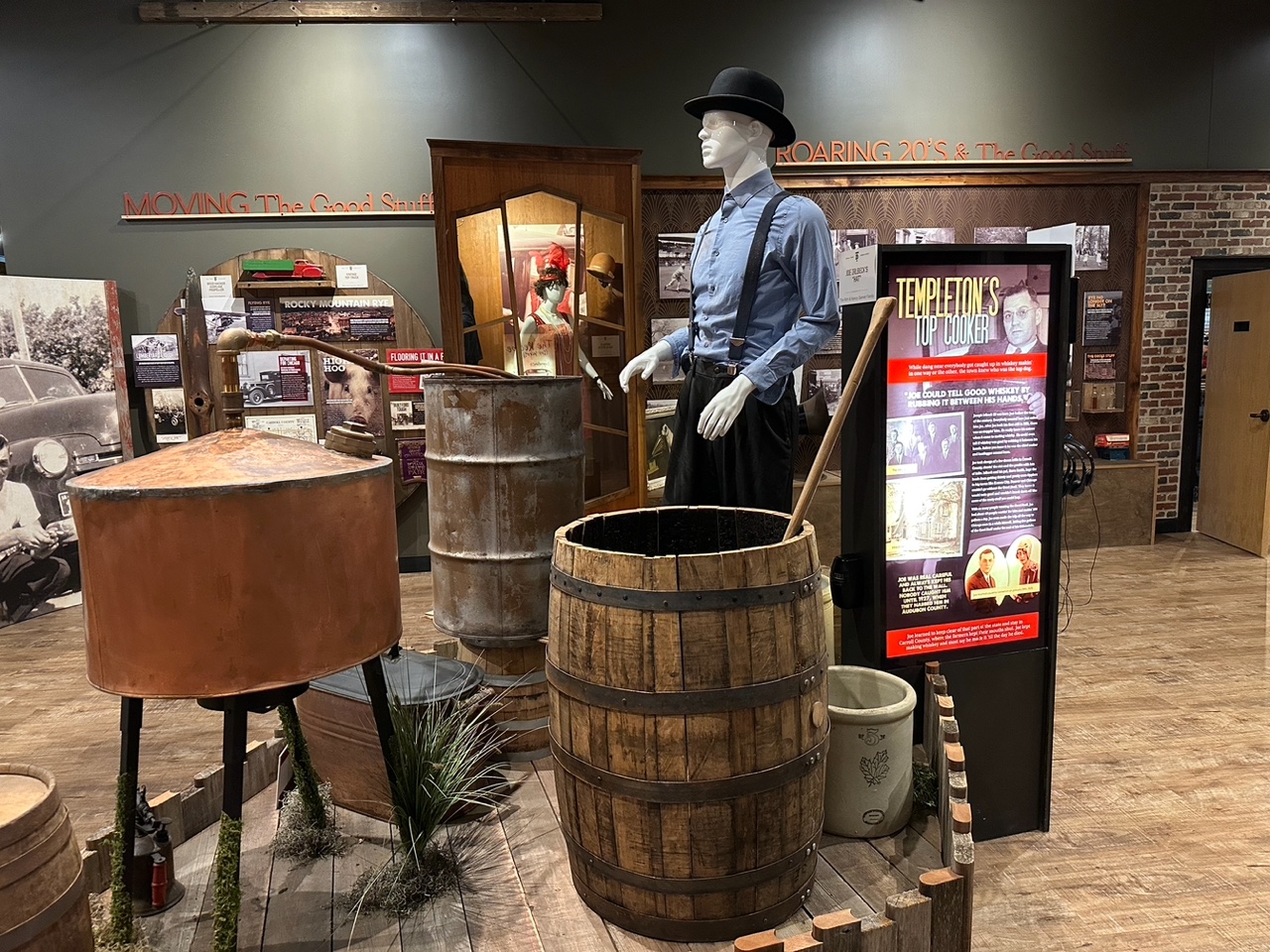
Start at the excellent museum-quality presentation that details how the county became whiskey central, supplying Chicago, Denver, New York, and the West Coast with that “good stuff.” You’ll also learn about the top cooker, Joe Irlbeck III, who at the peak had scores of families making 100 gallons a day that he’d transport, said Chase Prebeck, hospitality manager who led our tour. Prebeck’s grandfather and great-grandfather also made and hid whiskey during Prohibition. Prebeck said that chances are you’ll still find a still or several in the county. Sort of a “family tradition,” as Hank Williams Jr. sings.
Some famous folks helped the county’s family bootleggers, while others, including two future presidents, stopped by to partake.
To avoid the federal “revenooers,” you’ll learn how locals used ingenious ways to ship products and hide their operations. Including putting stills atop or under hog bedding areas to cover the odor. Bonus: the hogs would bump the barrels to help age and flavor it. When a batch was ready, they’d use more ingenuity.
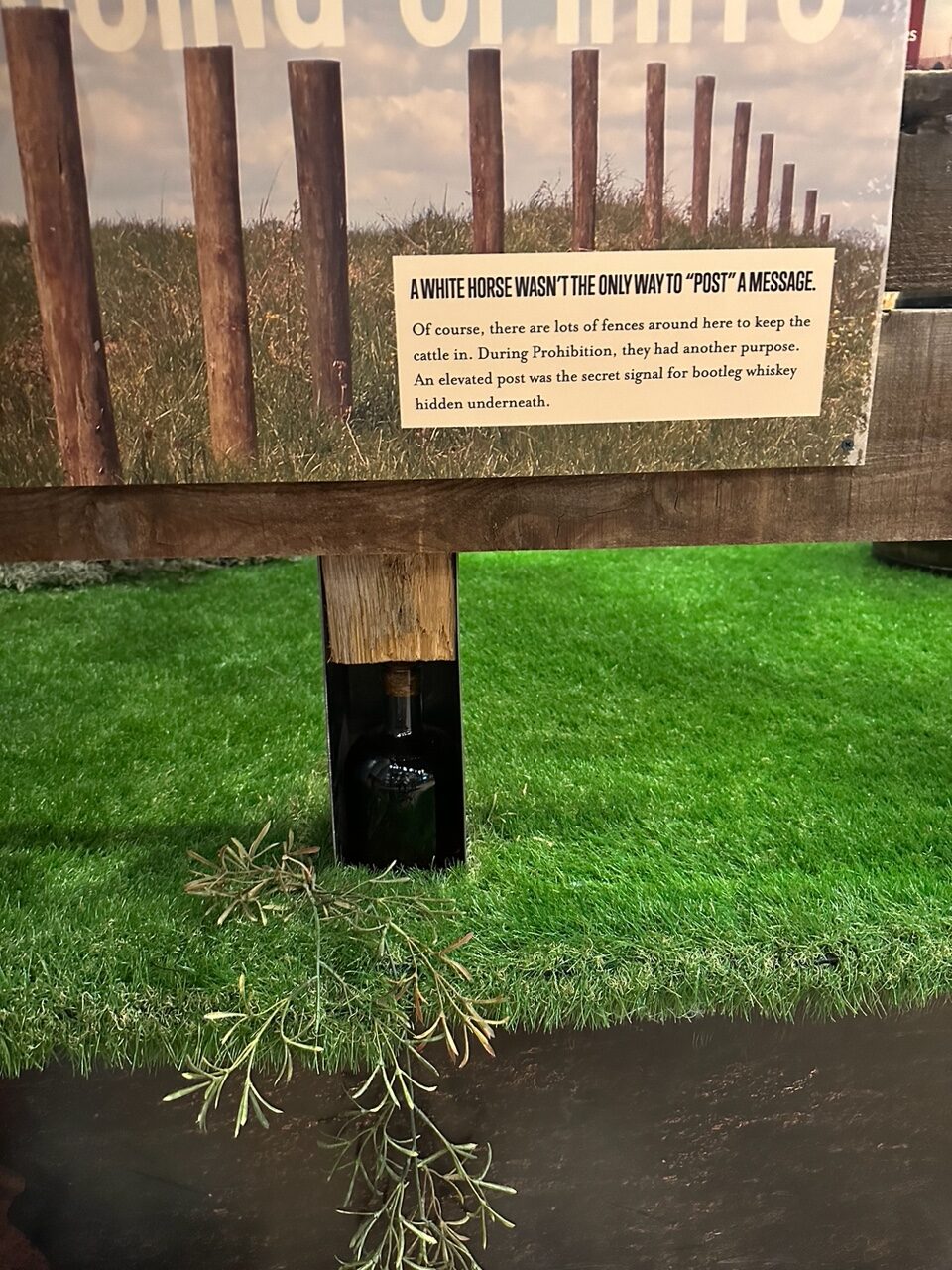
For putting the finished product in hollow fence posts, post a flag with the number—“22”. That meant finding your bottle by lifting the 22nd post. The feds couldn’t prosecute the land owner since the fence posts were on the right of way. Or, another maker would put out a statue of a white horse when that family’s batch was ready. Today, you’ll see a large replica of that horse on the distillery grounds.
Even cemetery headstones had secret compartments used to hide them. The local blacksmith, including one future president, Herbert Hoover, made copper stills. Grannies in big dresses sat in rocking chairs to churn the whiskey, flavor it quicker, and cover it while the feds were in town, and when the sheriff wore his hat, that also meant the feds were snooping or were on the way–the entire county was in on it.
Your tour then enters the modern mash cook and distillery, where rye from the Dakotas and Europe and yeast from Belgium combine to make whiskey. You’ll walk by 10,000-gallon fermenting tanks, each named after a Prohibition-era still owner, and by the twin stills made of 13,000 pounds of copper, where the actual whiskey begins its journey to a four-to-six-year aging process in charred oak barrels stacked in nearby warehouses.

You can then retreat to the bar where you can sample the finished product, and pick up a bottle of six-year rye and corn whiskey sold only at the distillery store. Its four-year blend is available at many liquor stores and Costco locations, and yes, you’ll also see the slogan, “The Good Stuff,” made famous by Carroll County’s Prohibition farm families, on every Templeton Rye label. You can also pick up T-shirts, drinking glasses and more.

When You Go
Templeton is about a one-and-a-half-hour drive west of Des Moines via Interstate 80 and north on Iowa 71. You can register for distillery tours at templetondistillery.com. The cost is $10 per person, with Veterans and current military being free. That fee gets you $10 off each at the gift shop, including bottles of rye. Check Harvest Hosts for overnighting here. You’ll be staying in the gravel parking lot, and in about five years or so, watch for bottles of Templeton Bourbon to appear on store shelves–it’s being “cooked” now.
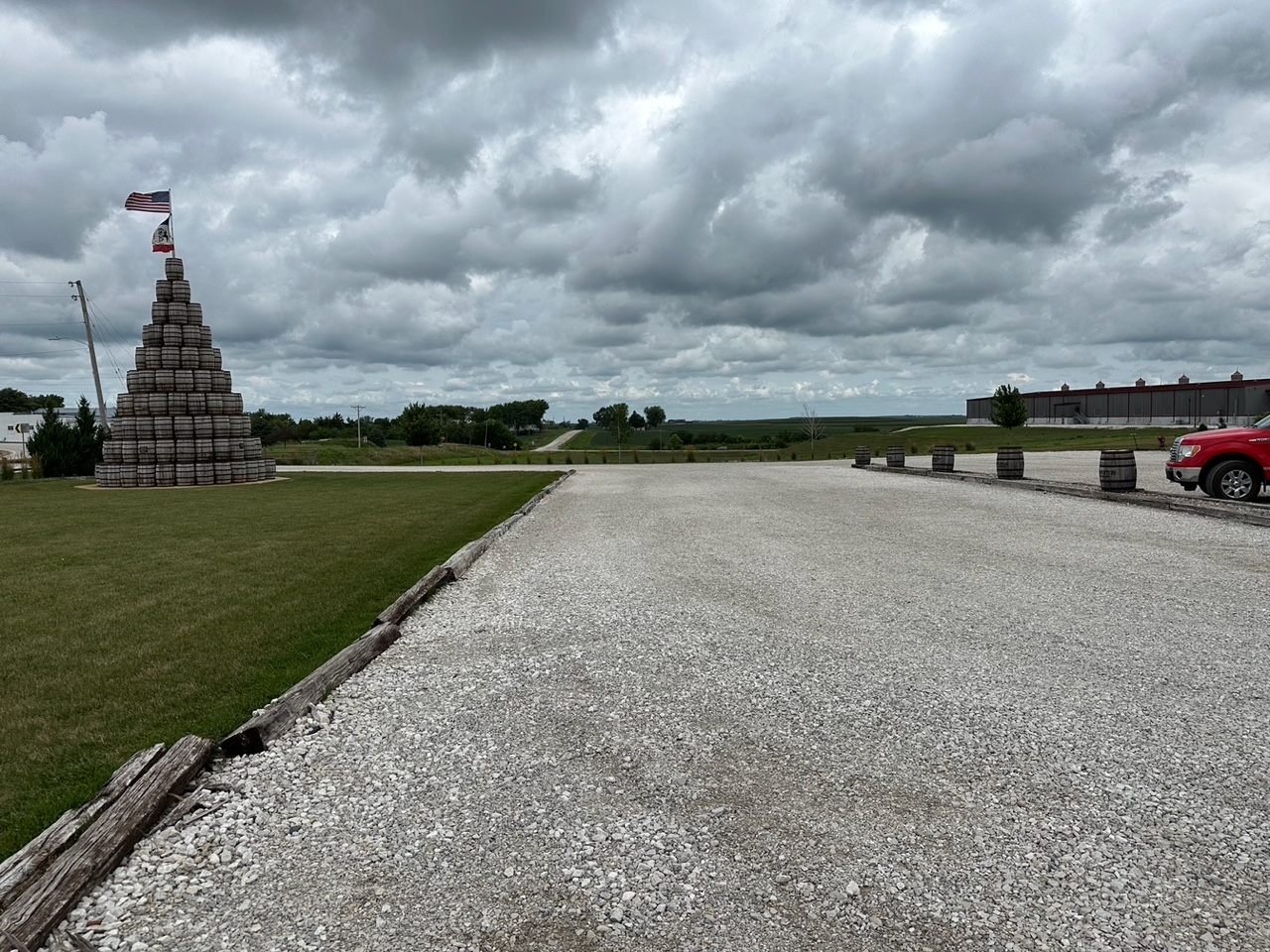


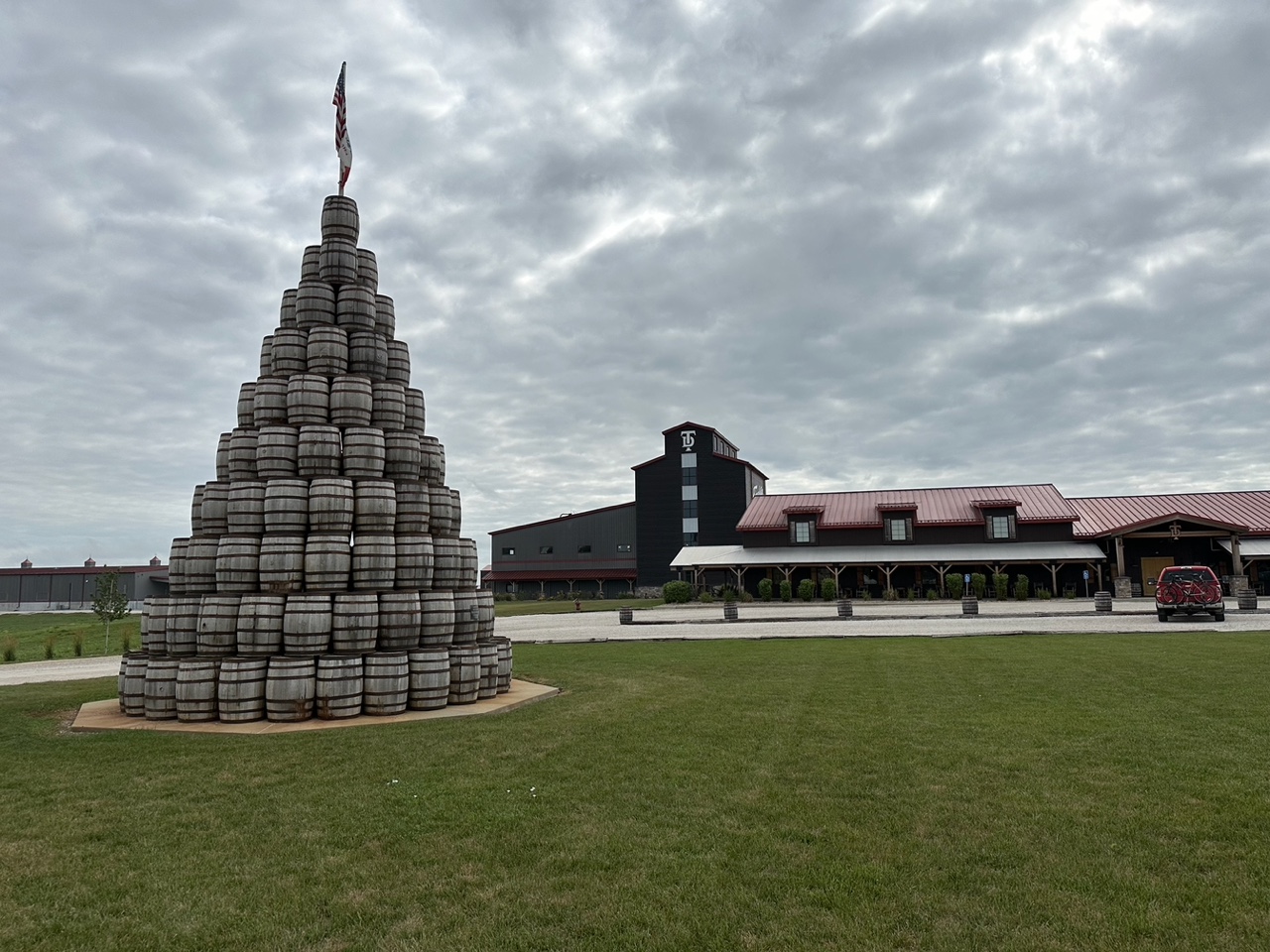

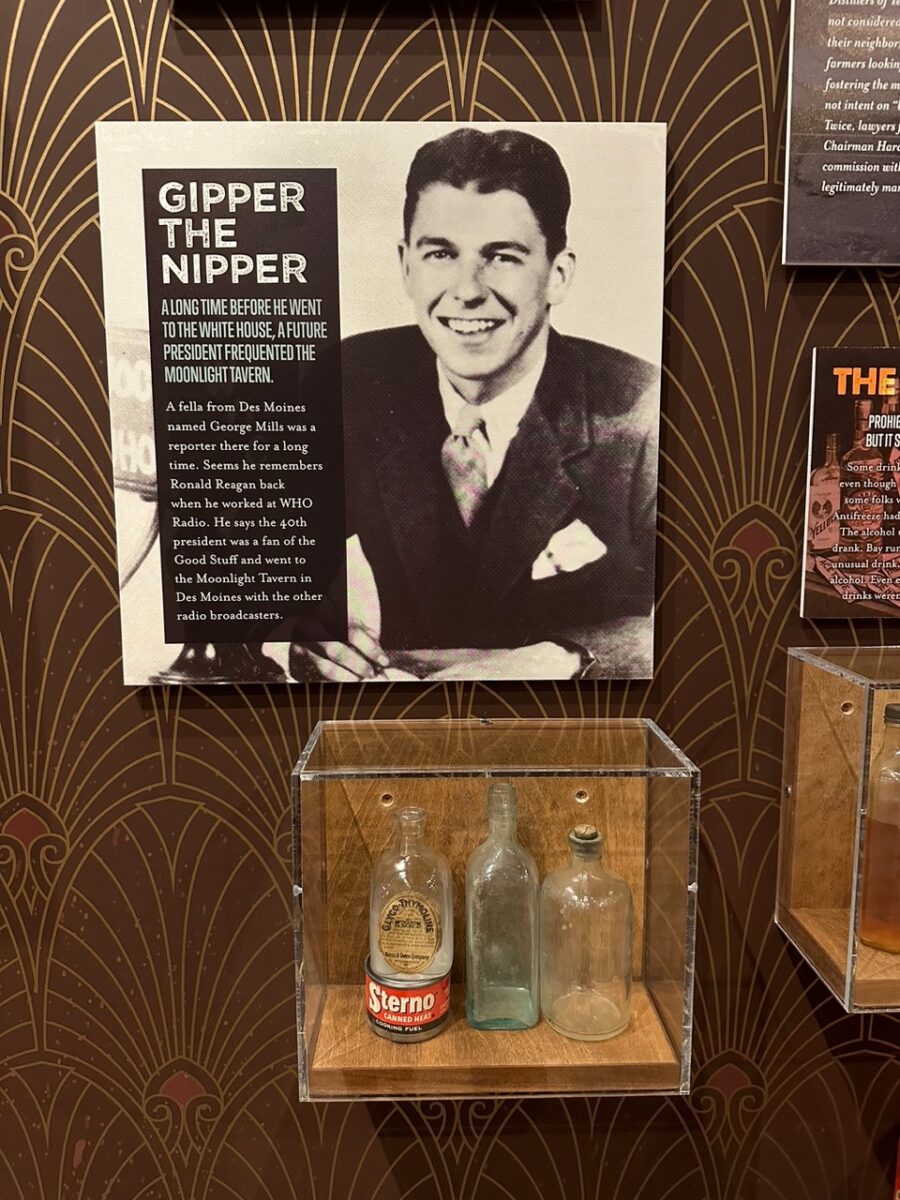
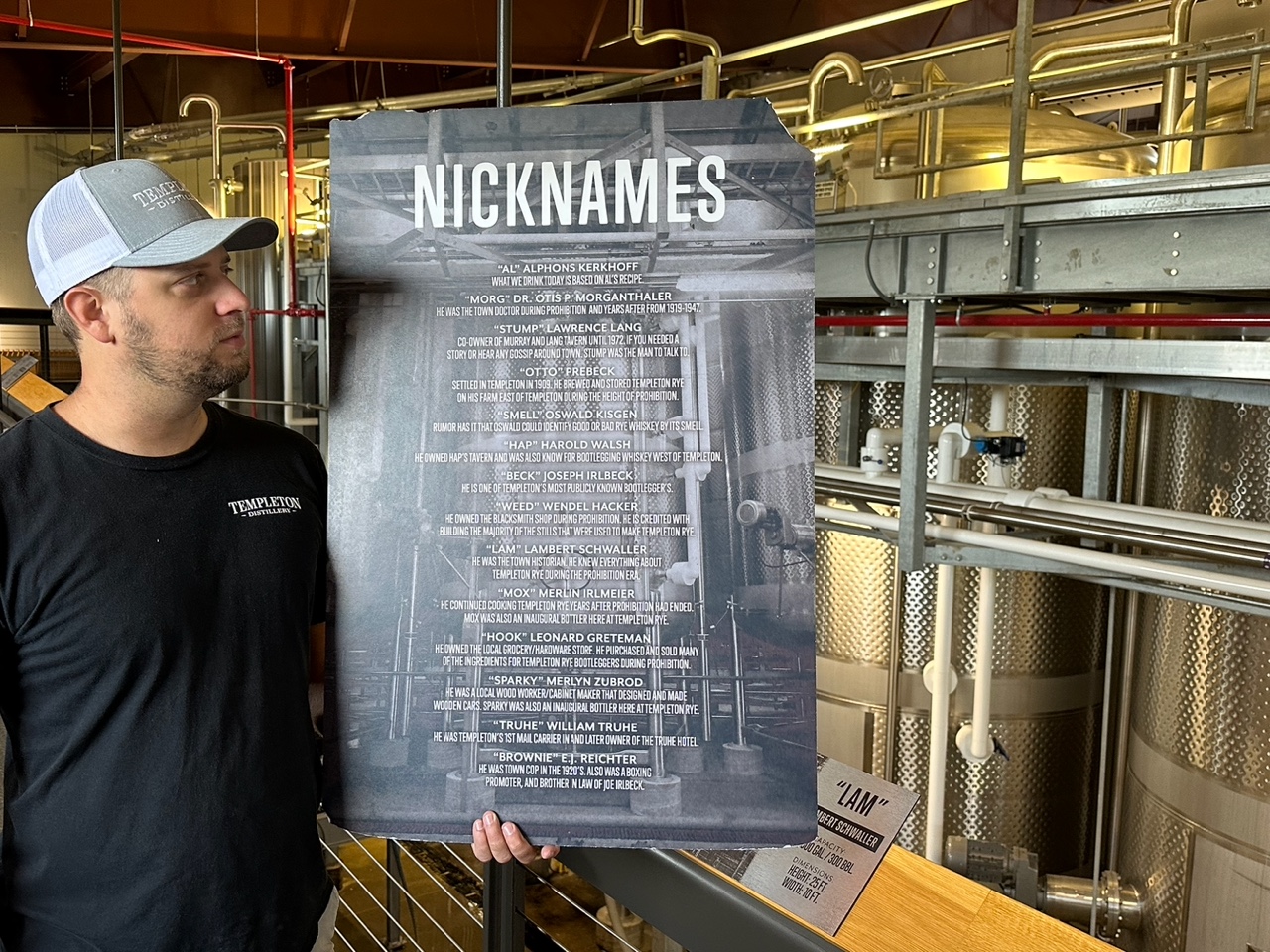
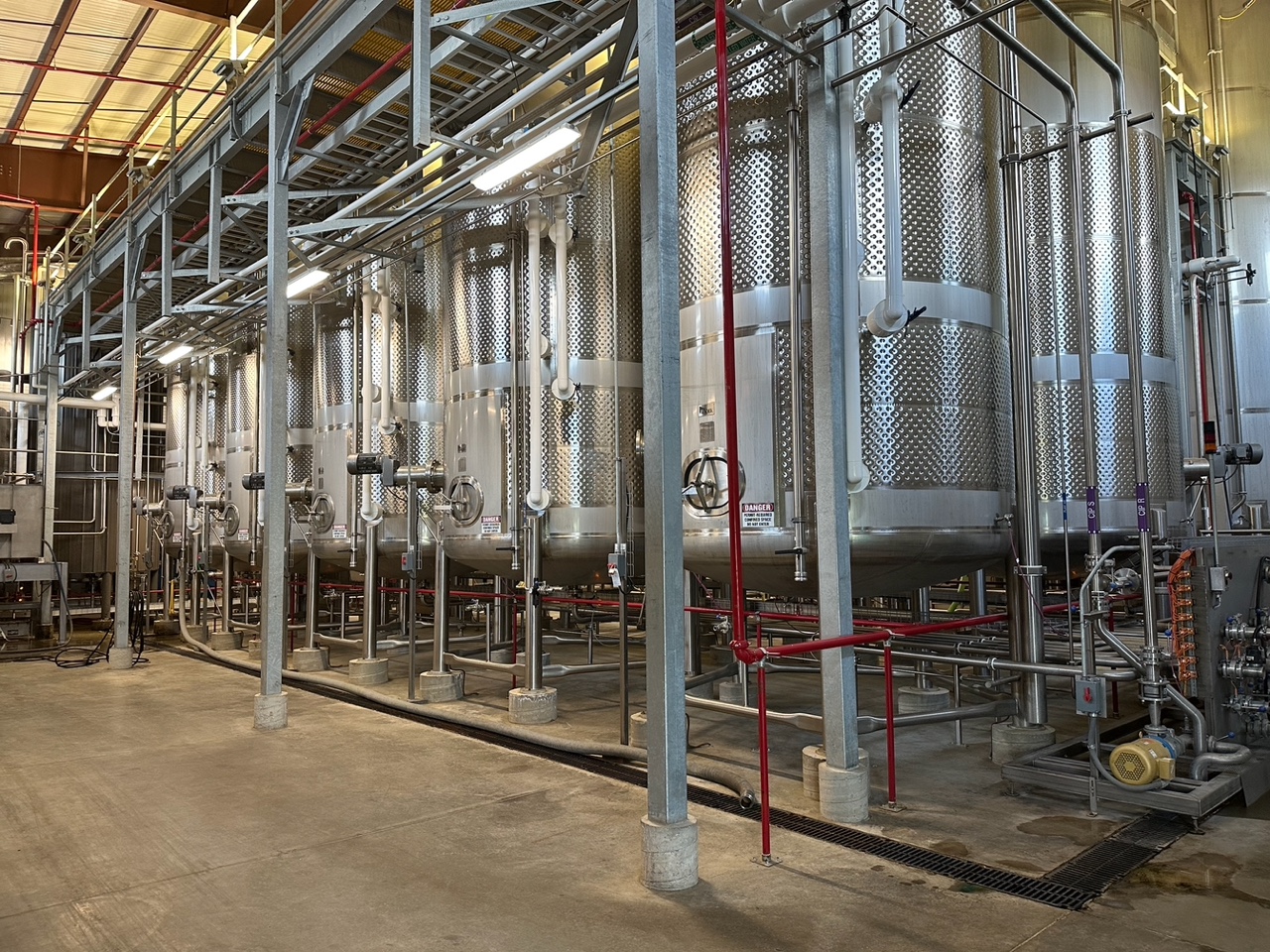



Comments